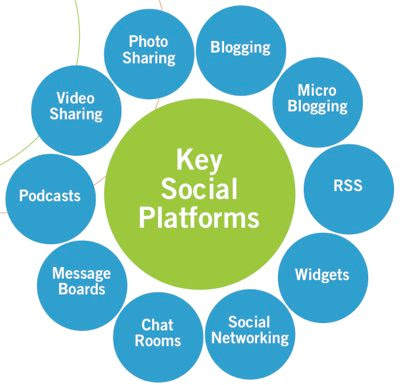
With all this talk about social media and learning, we may be missing the essential benefit, which is simple note taking and the sharing of those notes. Social media is notes on steroids.
I’m a note taker, whether it’s at talks, conferences, in margins of books or thoughts captured in my notebook. On top of this I write the equivalent of notes on Twitter, Facebook and longer blog posts. It’s a lifelong habit. I’m therefore astonished, when giving keynotes and talks at learning conferences, to see learning professionals sit there and NOT take notes and worse have no means to take notes.
In addition, articles on ‘learning how to learn’ or ‘metacognition’ often disappoint me, as they seem vague and lack the sort of direct advice that really does lead to a dramatic increase in retention. With this in mind I want to recommend something that I’d put at the top of any list. It’s simple, it’s obvious: it’s NOTE TAKING and its amplification through SOCIAL MEDIA.
Why take notes? Several reasons:
1. Increase memory
Studies on note taking (with control groups and reversal of note takers and non note takers to eliminate differences) show overwhelmingly that not taking increases memory/retention. Many aspects of increased memory have been studied including; increased attention, immediate recall, delayed tests, free recall, MCQs, remembering important v less important knowledge, correlations with quality of notes and deeper learning. Bligh (2000) has detailed dozens of studies in this area. Wittrick and Alesandrini (1990) found that written summaries increased learning by 30% through summaries and 22% using written analogies, compared to the control group. Why does note taking increase retention? First, increased focus, attention and concentration, the necessary conditions for learning. Second, increased attention to meaning and therefore better encoding. Thirdly, rehearsal and repetition, which processes it into long term memory. All three matter.
2. Increase performance
If you take notes AND review them, you do better on assessments (Kiewra 1989, 1991). Interestingly, Peper and Mayer (1978) found that note taking increased skills transfer and problem solving in computer programming and science (1986). Shrager and Mayer (1989) found similar effects in college students, learning about cameras. It would seem that note taking allows learners to relate knowledge to experience.
3. Detail & structure
As to the best type of note taking, it’s the most information in the fewest words. Students tend to miss lots of important information (even omitting negatives!), with as little as 50-10% of the important points noted. Detail does matter. Research also shows that mind maps are fine for conceptual structure bit not so good for detail. They are also difficult to construct during a lecture. There is also evidence to support the use of colour and/or lines with symbols that have classificatory meaning (EX – example, D- definition etc). In other words, the evidence for simple mind map productivity is very thin. Interestingly small breaks for revision of notes during talks increases performance as does revision in pairs (O’Donnell 1993).
4. Further learning
Notes offer the opportunity for further learning through rewriting. Notes that are spread out so that further work can be included and self-generated questions are also useful (King 1992). This points towards further reflection and study. This is important and leads to my next point that learning can be massively amplified through the use of social media.
5. Tweet it – seed it
I’d contend that the amplification of notes is the best way of using social media in learning. Note taking can be transformed into a social learning experience for yourself and others through social media. Tweets during a talk or conferences session brings it to life, captures the salient points and let’s others know what’s going on. Then there’s the amplification through retweets. In addition, links can be included. But its strength (limited characters) is its weakness, as further exposition is usually needed. Tweckling is OK as long as it doesn’t become useless carping!
6. Blog it - log it
This, I believe, is a far more useful social medium for learning. Blogs are personal voices and it forces you to write a structured and considered piece, enhancing your own learning, as well as sharing that learning with others. In addition, it opens up the discussion for further comments, often further expanding your learning. I find I gain a great deal by reading other blogs of the same event, to capture points I’ve missed. There’s also the bonus of archiving. One has a searchable database of knowledge.
7. Evernote - remember everything
Tools like Evernote point towards single. searchable repositories that work on all of your devices, for the capture, storage, organisation and recall of learning. The fact that people grab web pages, screenshots and photos adds to its richness. On top of this there's YouTube for video capture, podcasts, RSS and chat rooms. All can be seen as expansions of not taking.
NB
Note taking increases learning, results in deeper learning and leads to further learning. Social media is essentially an amplification of this process, it multiplies these effects through both personal and social learning. So in the search for an actual example of social media in learning, note taking has been researched and evaluated to be extremely powerful.










